Power consumption, temperatures, noise, real-world assessment
Remember, we're using an NVIDIA reference card in lieu of the ZOTAC GeForce GTX 1,024MB here. Head back to page five to learn more.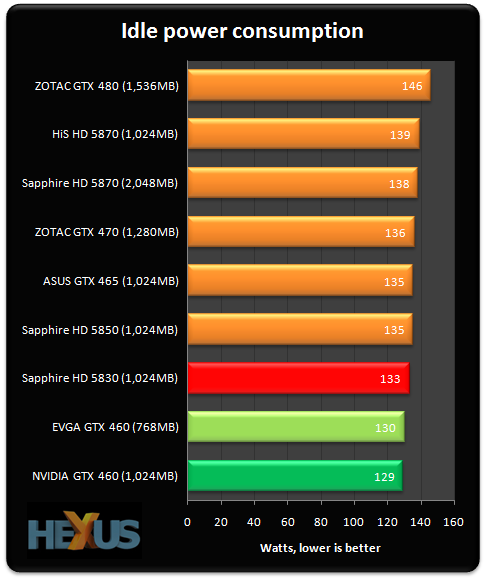
Power-draw numbers refer to a system-wide consumption measured with a mains-connected meter. Idle power is a touch lower than GF100-based Fermi cards'.
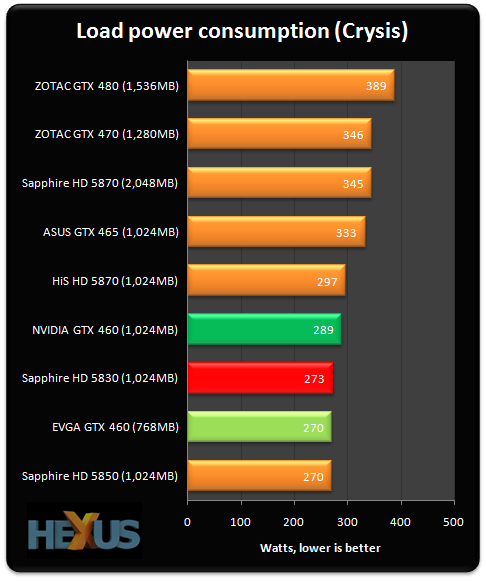
The new GTX 460 duo far more competitive with the Radeon HD 5800-series cards.
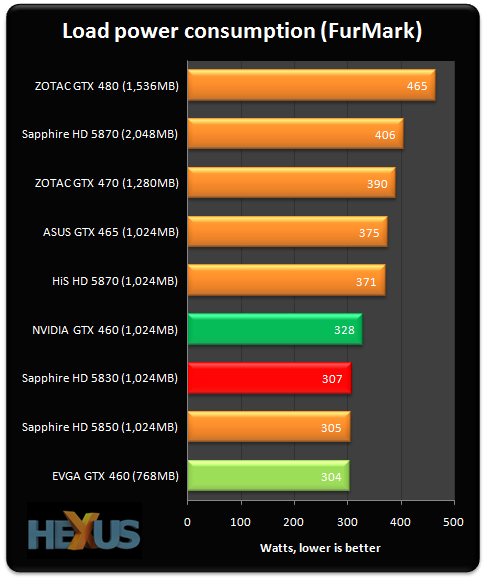
The worst-case power-draw scenario for a graphics card is to run FurMark. The numbers quoted represent the peak draw after running the benchmark for 10 minutes. The numbers are certainly more in line with the Radeon HD 5830 and HD 5850.
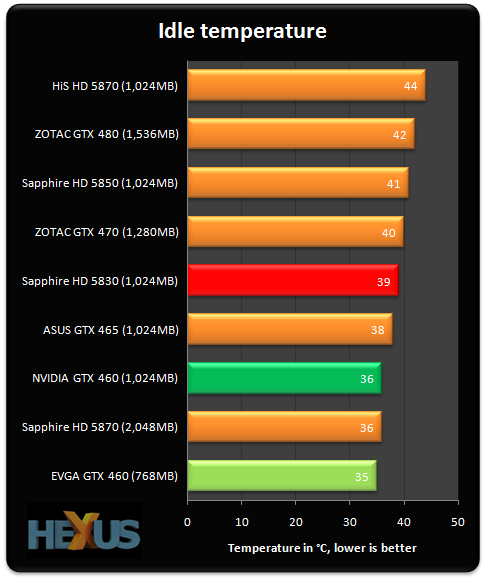
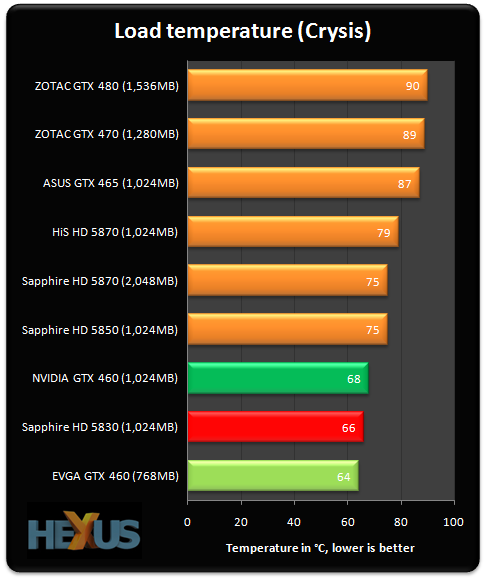
Noting temperatures by running GPU-Z in the background while playing Crysis shows that the new coolers and lower TDPs work well.

Even in FurMark.
A real-world assessment
A real-world assessment Examining the whole noise/heat/power issue in more detail and taking a real-world game into account, we played through Crysis Warhead and noted where system-wide power-draw was highest. We then left the card rendering the high power-draw scene for 10 minutes and logged the maximum temperature, fan-speed, and power-draw.The observations were noted with the card(s) installed inside a Corsair Obsidian 700D chassis with side panels on. All cards were tested with ambient temperatures between 24°C and 25.5°C. The 'upper' (hotter) card's temperature and fan-speed are noted if we're evaluating a multi-GPU setup. The table, below, highlights our findings and provides a subjective analysis of the fan noise.
| GPU | Power-draw (maximum) | Temperature (maximum) |
Fan speed (maximum) |
Quietness /10 (higher is better) |
|---|---|---|---|---|
| GeForce GTX 480 | 389W | 90°C | 3,720rpm | 3 |
| GeForce GTX 470 | 346W | 89°C | 3,510rpm | 3.5 |
| GeForce GTX 465 | 333W | 87°C | 3,210rpm | 4.5 |
| GeForce GTX 460 1,024MB | 287W | 68°C | 51 per cent | 8 |
| GeForce GTX 460 768MB | 270W | 64°C | 45 per cent | 8.5 |
| Radeon HD 5870 2,048MB | 345W | 75°C | 2,320rpm | 7.5 |
| Radeon HD 5870 1,024MB | 297W | 79°C | 2,150rpm | 7 |
| Radeon HD 5850 | 270W | 75°C | 2,000rpm | 6 |
| Radeon HD 5830 | 273W | 66°C | 1,700rpm | 6 |
Power-draw
Our major gripe against the GF100-based Fermis lay with the GPU temperature and fan noise profile when placed under long-term gaming load. The new GeForce GTX 460s ship with TDPs rated at 160W and 150W for the 1,024MB and 768MB cards, respectively, representing a 40W snip when compared against GTX 465.
We noted that the 768MB model pulled 270W, at the mains, when under full gaming load; some 63W less than the GTX 465. The 1,024MB card pulled a little more, at 287W, but comfortably below the GTX 465 that it easily matches in the benchmark stakes.
There's little doubt that the GF104-based Fermis are far better with respect to performance-per-watt but the Radeons are still kings of energy-efficiency.
Noise
EVGA's GeForce GTX 460 768MB's fan doesn't spin past 45 per cent when gaming. Whilst the rpm aren't shown, the card's fan can barely be heard over the noise emitted by a quiet-ish system. In fact, we reckon it's the least-noisy card in the entire line-up - some feat for a Fermi product. Temperatures, too, are excellent.
The same is true of the NVIDIA reference GTX 460 1,024MB card, whose fan has to run just a bit quicker to keep the card in check when gaming. It's certainly not loud by any stretch of the imagination.









